Table of Contents
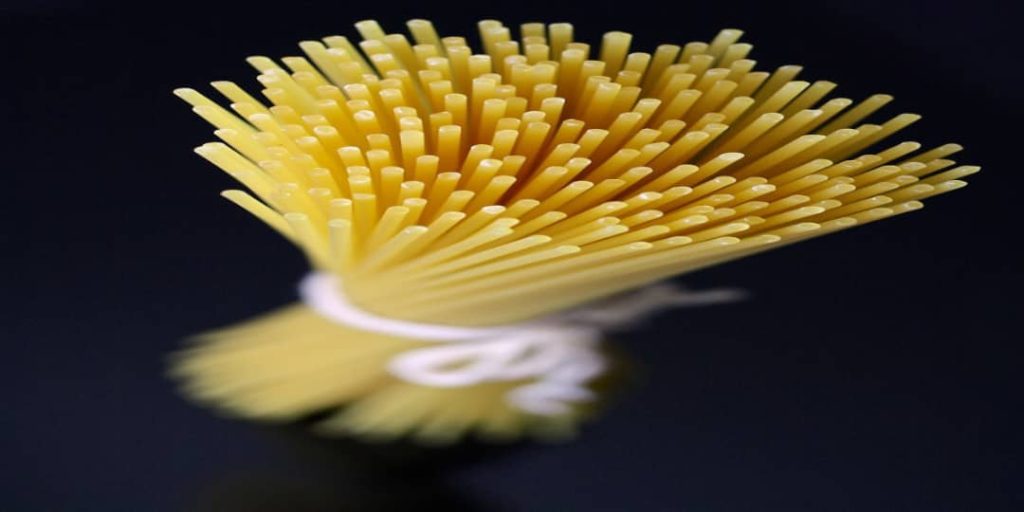
Spaghetti is one of those dishes that seems simple on the surface but holds a world of flavor and technique beneath. Whether you’re a seasoned chef or a kitchen novice, crafting the perfect spaghetti can sometimes feel like a culinary enigma. But what if we told you that the secret to good spaghetti lies in a combination of quality ingredients, precise cooking techniques, and a touch of personal flair? In this comprehensive guide, we’ll uncover the secrets to making mouth-watering spaghetti that will have your family and friends begging for more. So, grab your apron and let’s dive into the world of spaghetti!
Classic Spaghetti with Bolognese Sauce Recipe Best 1
The Foundation: Quality Ingredients
The journey to perfect spaghetti begins with selecting the right ingredients. Here’s a breakdown of what you’ll need:
- Pasta: Opt for high-quality, durum wheat pasta. The texture and flavor of your spaghetti will greatly depend on this choice. Brands like Barilla, De Cecco, and Rustichella d’Abruzzo are renowned for their quality.
- Tomatoes: For the sauce, fresh, ripe tomatoes or high-quality canned tomatoes like San Marzano are essential. They provide the rich, tangy base for your sauce.
- Olive Oil: Extra virgin olive oil adds depth and richness to your sauce. It’s worth investing in a good bottle.
- Garlic and Onions: These aromatics form the backbone of your sauce, offering a savory depth.
- Herbs and Spices: Fresh basil, oregano, and parsley are classic choices. Don’t forget a pinch of red pepper flakes for a bit of heat.
- Meat (Optional): Ground beef, pork, or Italian sausage can add a hearty dimension to your sauce.
- Cheese: Parmesan or Pecorino Romano are excellent for grating over the finished dish.
Detailed Ingredient Analysis
- Pasta: A Closer Look
- Durum Wheat Pasta: This type of pasta is known for its firmness and ability to hold up well during cooking. The high gluten content gives it a chewy texture and helps it retain its shape.
- Whole Wheat Pasta: For a healthier alternative, whole wheat pasta offers more fiber and nutrients. It has a nuttier flavor and denser texture, which can complement hearty sauces.
- Gluten-Free Pasta: Ideal for those with gluten sensitivities, gluten-free pasta made from rice, corn, or quinoa can be just as delicious. Cooking times may vary, so keep an eye on the texture.
- Tomatoes: Fresh vs. Canned
- Fresh Tomatoes: Choose ripe, juicy tomatoes like Roma or vine-ripened for the best flavor. Blanching and peeling them can be time-consuming but results in a fresher taste.
- Canned Tomatoes: San Marzano tomatoes are the gold standard for canned varieties. They are sweet, less acidic, and have a rich flavor that enhances any sauce.
- Olive Oil: Extra Virgin vs. Regular
- Extra Virgin Olive Oil: This is the highest quality olive oil, made from pure, cold-pressed olives. It has a robust flavor and is ideal for finishing dishes.
- Regular Olive Oil: This is a blend of cold-pressed and processed oils. It has a milder flavor and higher smoke point, making it suitable for sautéing and frying.
- Garlic and Onions: The Aromatic Duo
- Garlic: Fresh garlic cloves, when minced or crushed, release a potent aroma and flavor that forms the backbone of many Italian sauces.
- Onions: Yellow onions are versatile and offer a balance of sweetness and sharpness. Red onions can add a milder, slightly sweeter taste.
- Herbs and Spices: Fresh vs. Dried
- Fresh Herbs: Fresh basil, oregano, and parsley bring vibrant flavors and aromas to your sauce. Add them towards the end of cooking to retain their potency.
- Dried Herbs: While not as vibrant as fresh, dried herbs can be more convenient and still add significant flavor. Use them at the beginning of cooking to allow their flavors to meld.
- Meat Options
- Ground Beef: A common choice for a hearty meat sauce, ground beef adds richness and depth.
- Italian Sausage: Available in sweet or spicy varieties, Italian sausage adds a burst of flavor with its unique blend of spices.
- Pork: Ground pork or pork sausage can provide a slightly sweeter and fattier alternative to beef.
- Cheese: Parmesan vs. Pecorino Romano
- Parmesan: A hard, aged cheese with a nutty, savory flavor. It’s perfect for grating over pasta.
- Pecorino Romano: Made from sheep’s milk, this cheese is saltier and has a sharper flavor than Parmesan, making it a bold topping for spaghetti.
Step-by-Step Guide to Perfect Spaghetti
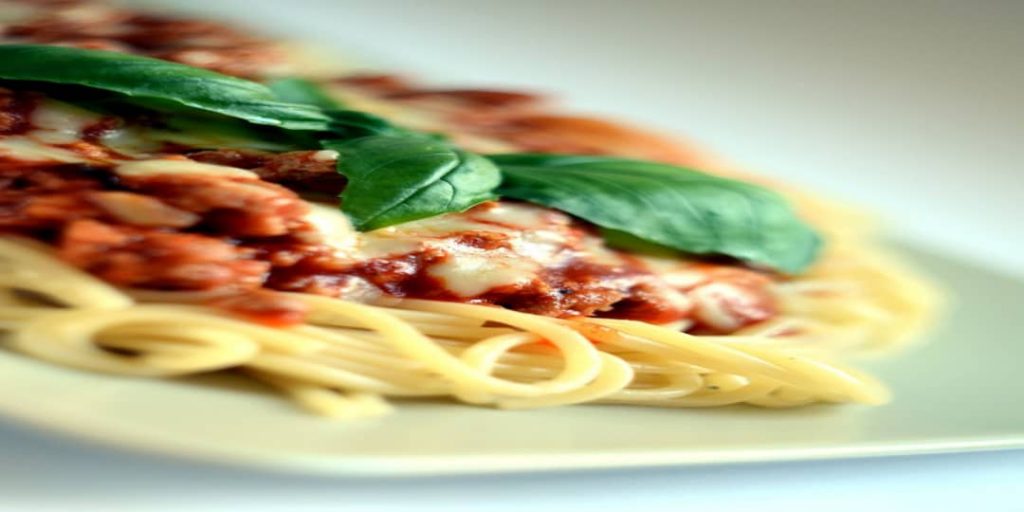
1. Preparing the Sauce
- Sauté the Aromatics: Start by heating a generous amount of olive oil in a large pan over medium heat. Add finely chopped onions and cook until translucent. Then, add minced garlic and sauté until fragrant.
- Tip: Be careful not to burn the garlic, as it can turn bitter. Keep the heat moderate and stir constantly.
- Add the Tomatoes: If using fresh tomatoes, blanch them in boiling water for a minute, then peel and chop. If using canned, crush them by hand or with a fork. Add the tomatoes to the pan, along with a pinch of salt, pepper, and red pepper flakes.
- Tip: For a smoother sauce, you can blend the tomatoes before adding them to the pan.
- Simmer: Let the sauce simmer on low heat for at least 30 minutes, stirring occasionally. This allows the flavors to meld together beautifully.
- Tip: If you have time, let the sauce simmer for an hour or more. The longer it cooks, the richer and more complex the flavors will become.
- Meat Option: If you’re adding meat, brown it in a separate pan and then add it to the sauce to simmer together.
- Tip: Drain any excess fat from the meat before adding it to the sauce to avoid greasiness.
- Herbs: Add chopped fresh basil and parsley towards the end of the cooking time to retain their vibrant flavors.
- Tip: Tear the basil leaves by hand instead of chopping them to prevent bruising and preserve their delicate flavor.
2. Cooking the Pasta
- Boil Water: Bring a large pot of salted water to a rolling boil. The water should taste like the sea, so don’t be shy with the salt.
- Tip: Use about 4-6 quarts of water per pound of pasta to ensure it cooks evenly and doesn’t stick together.
- Cook the Pasta: Add the spaghetti and stir occasionally to prevent sticking. Follow the package instructions for cooking time, but taste a minute or two before to ensure it’s al dente – firm to the bite.
- Tip: Different brands and types of pasta may have slightly different cooking times, so always taste to check for doneness.
- Reserve Pasta Water: Before draining the pasta, reserve a cup of the starchy cooking water. This will help emulsify the sauce and pasta together.
- Tip: The starch in the pasta water helps the sauce adhere to the noodles, creating a cohesive dish.
- Drain and Combine: Drain the pasta and immediately toss it in the sauce, adding a bit of the reserved pasta water to achieve a silky, cohesive sauce.
- Tip: Toss the pasta and sauce over medium heat for a minute or two to ensure they meld together perfectly.
3. Serving the Spaghetti
- Plating: Use tongs to serve the spaghetti, twisting it into nests on each plate for an elegant presentation.
- Tip: Warm the plates before serving to keep the spaghetti hot longer.
- Garnish: Finish with a drizzle of high-quality olive oil, a sprinkle of fresh herbs, and a generous grating of Parmesan or Pecorino Romano.
- Tip: A final touch of freshly cracked black pepper can add an extra layer of flavor.
- Accompaniments: Serve with a simple green salad and some crusty garlic bread for a complete meal.
- Tip: A light, crisp white wine or a medium-bodied red wine can complement the flavors of the spaghetti beautifully.
- what exactly is spaghetti Bolognese? Best of 2024
Exploring Regional Variations of Spaghetti
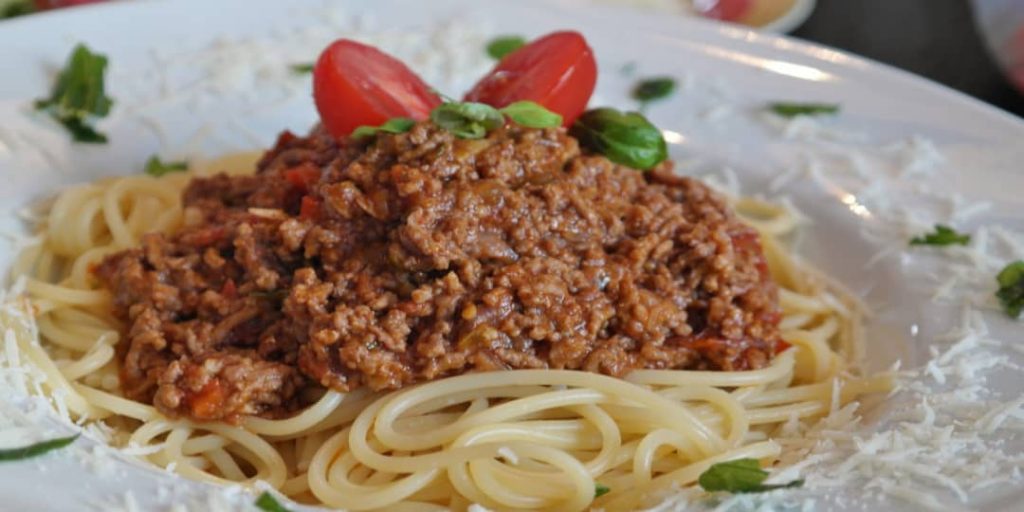
Spaghetti is a versatile dish that can be adapted to incorporate a variety of regional flavors and ingredients. Here are a few popular variations from around the world:
Spaghetti alla Carbonara
Originating from Rome, this classic dish combines eggs, cheese, pancetta, and pepper for a rich, creamy sauce without any cream.
- Ingredients: Spaghetti, eggs, Pecorino Romano, pancetta or guanciale, black pepper.
- Method: Cook the pasta and reserve some cooking water. In a bowl, whisk eggs and cheese. Cook the pancetta until crispy. Toss the hot pasta with pancetta and its rendered fat, then quickly mix in the egg mixture, using pasta water to create a creamy sauce.
Spaghetti Bolognese
A meat-based sauce from Bologna, traditionally served with tagliatelle but equally delicious with spaghetti.
- Ingredients: Ground beef and pork, onions, carrots, celery, garlic, tomatoes, red wine, milk, bay leaves.
- Method: Sauté onions, carrots, and celery until soft. Add garlic and cook briefly. Brown the meat, then add tomatoes, wine, and milk. Simmer for several hours to develop deep flavors.
Spaghetti alle Vongole
A Neapolitan specialty featuring clams, garlic, white wine, and parsley for a light, seafood-infused dish.
- Ingredients: Spaghetti, fresh clams, garlic, white wine, parsley, red pepper flakes, lemon.
- Method: Cook garlic and red pepper flakes in olive oil until fragrant. Add clams and wine, cover, and cook until clams open. Toss with cooked spaghetti and parsley, finishing with a squeeze of lemon juice.
Spaghetti Puttanesca
A robust and tangy dish from Naples, made with tomatoes, olives, capers, and anchovies.
- Ingredients: Spaghetti, tomatoes, garlic, anchovies, olives, capers, red pepper flakes, parsley.
- Method: Sauté garlic and anchovies in olive oil until anchovies dissolve. Add tomatoes, olives, capers, and red pepper flakes. Simmer briefly, then toss with cooked spaghetti and parsley.
Tips and Tricks for Spaghetti Mastery
- Seasoning: Always taste and adjust seasoning as you go. The balance of salt, acidity, and sweetness is crucial.
- Tip: A small amount of sugar can balance acidity in tomato sauce without making it sweet.
- Pasta Water: This starchy water is liquid gold. It helps the sauce cling to the pasta, creating a more unified dish.
- Tip: If your sauce is too thick, add pasta water a little at a time until the desired consistency is achieved.
- Fresh vs. Dried Pasta: While dried pasta is great for everyday use, fresh pasta can elevate your dish to new heights.
- Tip: Fresh pasta cooks much faster than dried, so adjust your timing accordingly.
- Slow Cooking: Allowing your sauce to simmer slowly lets the flavors develop and intensify. Patience is key!
- Tip: Use a heavy-bottomed pot to ensure even heat distribution and prevent burning.
- Experiment: Don’t be afraid to experiment with different ingredients and techniques. Add a splash of red wine to the sauce, or try different herbs and spices.
- Tip: Roasting tomatoes and garlic before adding them to the sauce can add a smoky depth of flavor.
- Proper Storage: Leftover spaghetti can be just as delicious if stored and reheated correctly.
- Tip: Store sauce and pasta separately if possible, and reheat gently to avoid overcooking.
- Pairing with Sides: Complement your spaghetti with well-chosen sides to create a balanced meal.
- Tip: A light, refreshing salad with a tangy vinaigrette can cut through the richness of the sauce.
- Perfect Pasta Texture: Achieving al dente pasta requires careful attention to cooking times.
- Tip: Taste the pasta a minute or two before the recommended cooking time to ensure it’s cooked to your preference.
Advanced Techniques for Spaghetti Aficionados
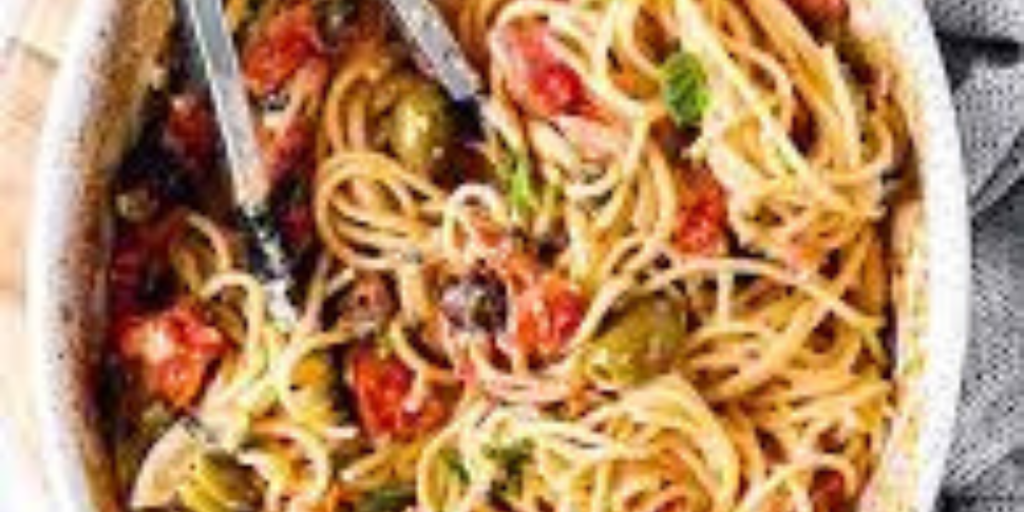
For those looking to take their spaghetti to the next level, here are some advanced techniques and ideas:
Infused Oils
- Garlic-Infused Olive Oil: Heat olive oil with crushed garlic cloves over low heat until fragrant. Use this oil to sauté your aromatics or drizzle over finished dishes for extra flavor.
How do you make spaghetti Bolognese taste better?
Herb-Infused Pasta Dough
- Fresh Herb Pasta: Incorporate finely chopped fresh herbs like basil, parsley, or thyme into your fresh pasta dough for a burst of flavor in every bite.
Homemade Tomato Paste
- Intensifying Flavor: Make your own tomato paste by slowly cooking down tomatoes, garlic, and herbs until thick and concentrated. This can be added to sauces for a deeper, richer flavor.
Meatball Mastery
- Perfect Meatballs: Combine ground meat with breadcrumbs soaked in milk, finely grated Parmesan, minced garlic, and herbs. Brown in a hot pan before simmering in sauce.
Seafood Variations
- Seafood Spaghetti: Combine shrimp, scallops, or squid with garlic, white wine, and fresh tomatoes for a luxurious seafood pasta dish.
Vegetarian and Vegan Options
- Veggie-Packed Sauce: Add finely chopped vegetables like zucchini, bell peppers, and mushrooms to your tomato sauce for added nutrition and flavor.
- Vegan Cheese: Use nutritional yeast or cashew-based cheese alternatives for a dairy-free topping.
Customizing the Sauce
- Spicy Arrabbiata: Add extra red pepper flakes or fresh chili peppers for a fiery kick.
- Creamy Alfredo: Combine butter, heavy cream, and Parmesan for a rich, creamy sauce. Toss with cooked pasta and freshly cracked black pepper.
Perfecting the Finish
- Final Touches: Finish your spaghetti with a drizzle of truffle oil, a sprinkle of toasted pine nuts, or a handful of arugula for an elegant touch.
FAQ: Frequently Asked Questions about Spaghetti
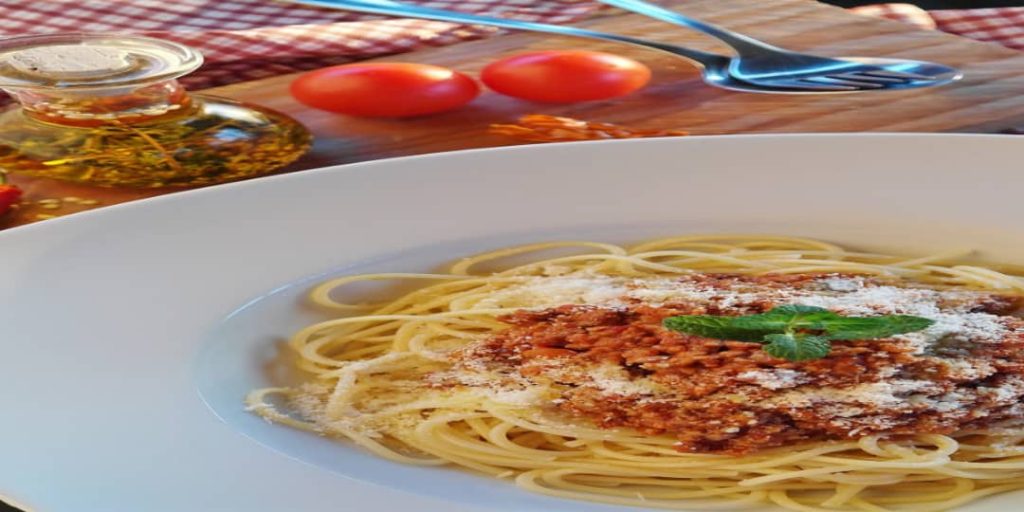
Q: Can I use whole wheat or gluten-free pasta? A: Absolutely! Whole wheat and gluten-free pastas are great alternatives and can be used in the same way as regular pasta. Just be sure to adjust cooking times as needed.
Q: What if my sauce is too acidic? A: If your sauce tastes too acidic, you can balance it with a pinch of sugar or a splash of heavy cream.
Q: How do I store leftover spaghetti? A: Store leftover spaghetti in an airtight container in the refrigerator for up to three days. Reheat gently on the stove with a splash of water or olive oil.
Q: Can I freeze spaghetti sauce? A: Yes, spaghetti sauce freezes well. Store it in airtight containers or freezer bags for up to three months. Thaw in the refrigerator overnight before reheating.
Q: What proteins can I add to my spaghetti? A: Ground beef, pork, Italian sausage, meatballs, chicken, shrimp, or even lentils for a vegetarian option are all great choices.
Q: How can I make my spaghetti sauce thicker? A: To thicken your sauce, let it simmer uncovered until it reduces to your desired consistency. You can also add a bit of tomato paste.
Q: What’s the best way to reheat spaghetti? A: The best way to reheat spaghetti is on the stove over low heat, adding a splash of water or olive oil to prevent it from drying out.
Q: How do I prevent my pasta from sticking together? A: Stir the pasta occasionally while cooking and make sure there’s enough water in the pot. Draining and immediately tossing with sauce also helps prevent sticking.
Q: What are some creative toppings for spaghetti? A: Consider adding roasted vegetables, fresh herbs, toasted breadcrumbs, or a dollop of ricotta for extra flavor and texture.
Q: Can I make spaghetti without a tomato-based sauce? A: Yes! Try a pesto sauce, garlic and olive oil (aglio e olio), or a creamy Alfredo for a different twist.
Q: How do I avoid overcooking my pasta? A: Follow the cooking time on the package but start tasting a minute or two before the time is up. Drain the pasta while it’s still al dente.
Q: Can I make spaghetti in advance? A: Yes, but it’s best to store the pasta and sauce separately to prevent the pasta from becoming too soft. Combine and heat just before serving.
Q: How do I add a smoky flavor to my spaghetti sauce? A: Add a small amount of smoked paprika or a dash of liquid smoke to your sauce. Roasting tomatoes and garlic before adding them can also impart a smoky flavor.
Q: Can I use other types of pasta with these sauces? A: Absolutely! Spaghetti sauces can be paired with various pasta shapes like penne, fettuccine, or rigatoni.
Q: What is the best way to grate cheese for spaghetti? A: Use a microplane or fine grater to achieve light, fluffy cheese that melts easily over hot pasta.
Q: How do I make a vegan spaghetti sauce? A: Use olive oil instead of butter, omit cheese, and use vegetable broth or water as a base. Add nutritional yeast for a cheesy flavor.
Q: Can I add wine to my spaghetti sauce? A: Yes! Adding a splash of red or white wine can deepen the flavor of your sauce. Just make sure to cook off the alcohol before serving.
Q: What are some good side dishes for spaghetti? A: Garlic bread, Caesar salad, roasted vegetables, and a simple green salad are all excellent accompaniments.
Q: How do I keep spaghetti warm for serving? A: Keep the pasta and sauce warm in separate pots over low heat, combining them just before serving. Alternatively, place the serving dish in a warm oven.
Q: How do I make my spaghetti sauce more savory? A: Adding a bit of soy sauce, Worcestershire sauce, or miso paste can enhance the umami flavor of your sauce.
Q: Can I make spaghetti with a slow cooker? A: Yes! Prepare your sauce in a slow cooker for a hands-off approach. Add the cooked pasta just before serving.
Q: How do I add vegetables to my spaghetti sauce without making it too watery? A: Sauté or roast vegetables beforehand to remove excess moisture. You can also purée some vegetables to thicken the sauce.
Join the Conversation
We’d love to hear about your spaghetti-making adventures! Share your tips, tricks, and favorite recipes with us on social media. Don’t forget to tag us and use the hashtag #SpaghettiSecrets for a chance to be featured on our page. Let’s create a community of spaghetti enthusiasts who inspire each other to cook and share delicious meals.
Conclusion
The secret to good spaghetti lies in the details – from selecting high-quality ingredients and mastering cooking techniques to experimenting with flavors and personal touches. By following this guide, you’ll be well on your way to creating spaghetti dishes that are not only delicious but also a true reflection of your culinary skills and creativity. So, roll up your sleeves, embrace the process, and most importantly, enjoy every bite. Bon appétit!
Ready to make your best spaghetti yet? Share this guide on Facebook and Twitter to spread the spaghetti love!





















